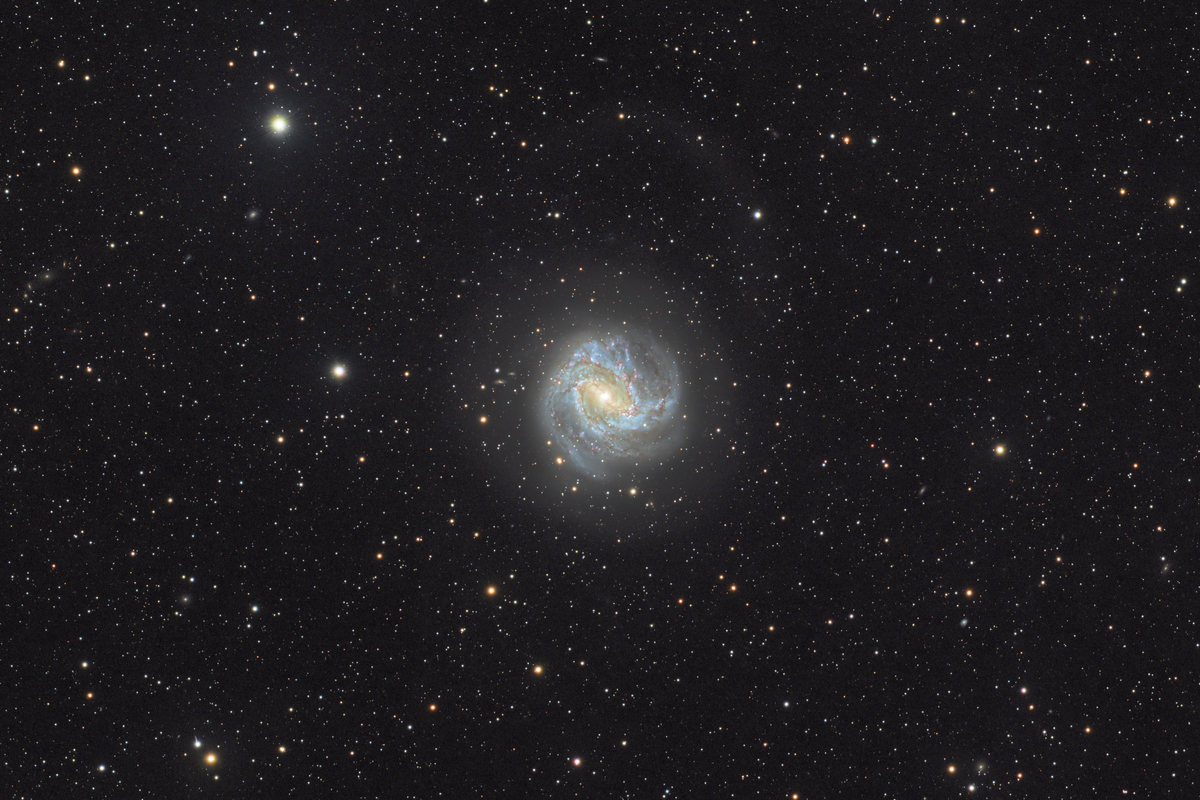
[back] M 83 (wide field) in Hydra [NED]
Higher resolved uncroped image /
höher aufgelöstes unbeschnittenes Bild (9473 x 6291 Pixel)
Annotated
uncroped image (9473 x 6291 Pixel)

|
Type SBc, distance ~ 3.7Mpc/12MLy. |
|
5' |
|
(c) 2024 All astro photo images are copyrighted. They may not be used or reproduced without explicit written permission from the authors.
About this Image / Über dieses Bild
| Camera: | Moravian C3-PRO-61000 Mono CMOS |
| Image Type, Orientation: | L-RGB Color Composite, North is at 12:00 |
| Exposure time: | L: 20*300 sec., R,G,B: 8*300 sec. each (3:40h total) |
| Exposure date: | May 4th...14th, 2024 |
| Location: | Capella Observatory South at Kiripotib Astro Farm, Namibia |
| Filter: | Astronomik Deep-Sky Deep-Sky RGB Filter on Moravian EFW-3L-9-II External Filter Wheel |
| Instrument: | "Callisto", a Takahashi FSQ 106N, 530mm focal length, 106mm aperture, f/5 on modified Losmandy G11 (high res encoders with OnStepX) |
| Photographer: | Rainer Raupach, Josef Pöpsel, Frank Sackenheim |
|
Remarks: |
Messier 83 is a
barred spiral galaxy of the Hubble type SAB(s)c in the constellation of
Hydra, located about 50 million light-years away. It is often referred to as
the Southern Pinwheel Galaxy. In terms of its apparent overall brightness,
it is one of the brightest galaxies in the southern sky. Recently, M83 has
been a subject of research, primarily using data from MUSE (Multi Unit
Spectroscopic Explorer) at the VLT, as well as the Hubble and JWST space
telescopes. |
|
Bemerkungen: |
Messier 83 ist eine Balkenspirale vom Hubble-Typ
SAB(s)c im Sternbild Hydra (Wasserschlange) mit einer Entfernung von etwa 50
Millionen Lichtjahren, häufig auch als südliche Feuerradgalaxie bezeichnet.
Hinsichtlich ihrer scheinbaren Gesamthelligkeit ist sie eine der hellsten
Galaxien am südlichen Himmel. M83 ist auch in jüngster Zeit Gegenstand der
Forschung, vor allem mithilfe von Daten von MUSE (Multi Unit Spectroscopic
Explorer) am VLT, sowie den Weltraumteleskopen Hubble und JWST. |
Back to the Galaxies' Overview / Zurück zur Galaxien-Übersichtsseite